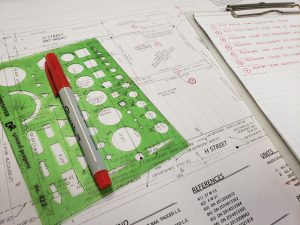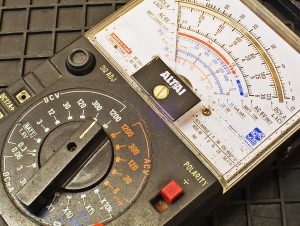This new series will be a lot of fun. I’m going to share what I’ve learned as a general overview on the process of building 4 different solar systems. I’ve gone from a full DIY piecemeal system to high end Victron Energy system. Along the way I’ve made quite a few mistakes and found all the ways to NOT do it. In this series I’ll share my experiences and what my idea of an ultimate mobile off-grid system is. Hint: the old axiom of “You get what you pay for!” might be true in solar builds!
Who’s it for?
The series is aimed at someone who has never dug into building an off-grid solar system but would like to. If you are looking to build a cargo trailer conversion, are just getting started with full-time RV’ing and planning on putting in a new solar system or just wondering what the process is for installing an off-grid solar system then this is for you. It would also serve as a checklist for someone getting their ducks in a row for a new install.
Here’s a rundown of what I have planned for this series:
1. Planning & System Design
-
Determine power needs (daily watt-hours or amp-hours)
-
Create a usage profile (lights, fridge, fans, etc.)
-
Choose system type:
-
Modular system (separate components)
-
All-in-one power station (integrated battery, inverter, and controller)
-
-
Decide on DC vs AC loads
-
Sketch wiring diagram or system layout (if not all-in-one)
-
Choose fixed vs portable solar panels
2. Battery Bank
-
For modular systems:
-
Battery type: AGM, Gel, Lithium (LiFePO4), Lead Acid
-
Sizing: Capacity (Ah), voltage (12V, 24V, 48V)
-
Battery monitor/BMS
-
-
For all-in-one systems:
-
Check built-in battery specs (capacity, chemistry)
-
Expandability options (some allow extra battery packs)
-
3. Solar Panels
-
Type: Monocrystalline, Polycrystalline, Bifacial, Thin Film
-
Wattage and number of panels
-
Fixed vs portable panels
-
Compatibility with charge controller or all-in-one unit
-
Input voltage/amperage limits for all-in-one systems
4. Charge Controller
-
For modular systems:
-
Type: PWM vs MPPT
-
Sizing (amps, volts), safety features
-
-
For all-in-one systems:
-
Built-in MPPT controller (usually optimized and pre-configured)
-
Input range compatibility with chosen panels
-
5. Inverter
-
For modular systems:
-
Pure sine wave vs modified sine wave
-
Wattage and surge capacity
-
Standalone or inverter-charger combo
-
-
For all-in-one systems:
-
Built-in inverter (check AC wattage output)
-
Pass-through charging support for use while charging
-
6. Wiring & Connectors
-
For modular systems:
-
Wire gauge based on load and distance
-
Fuse blocks, breakers, MC4 connectors
-
Proper crimping, routing, and protection (conduit, loom)
-
-
For all-in-one systems:
-
Pre-wired internally
-
Minimal external wiring (solar input, optional DC/AC output wiring)
-
Plug-and-play connectors for solar and expansion batteries
-
7. Mounting Hardware & Installation
-
Solar panel mounts (roof, tilting, folding suitcase-style)
-
Battery boxes or secured compartments (modular)
-
Mounting brackets for inverter/controller (if separate)
-
Dedicated location for all-in-one system (secured, ventilated)
8. Safety & Grounding
-
Fuses, breakers, and disconnects for modular setups
-
System grounding (panels, controller, battery frame)
-
Built-in protection for all-in-one units (typically includes BMS, over-voltage, short-circuit protection)
-
Surge protection and fire safety prep
9. Tools & Equipment Needed
-
For modular builds:
-
Multimeter, wire stripper/crimper, torque wrench
-
Drill, fasteners, heat shrink, terminal tools
-
-
For all-in-one systems:
-
Minimal tools—often plug-and-play
-
Tools mostly needed for mounting solar panels or optional expansion wiring
-
10. Monitoring & Management
-
Modular systems:
-
Separate battery monitor (Victron, Renogy)
-
Charge controller and inverter displays
-
-
All-in-one systems:
-
Integrated display panels
-
Mobile apps for Bluetooth/Wi-Fi monitoring
-
Smart features (load optimization, timers)
-
11. Environmental Considerations
-
Sun exposure, panel angle, and seasonal shifts
-
Battery protection from extreme temps
-
Ventilation and cooling needs (especially for all-in-one units)
-
Moisture, dust, and shock protection
12. Testing & Troubleshooting
-
Pre-installation checks (voltage, continuity)
-
Load testing (battery and inverter capacity)
-
Panel output verification
-
Diagnostics through app or onboard interface (all-in-one)
-
Watch for overcurrent or undervoltage warnings
13. Maintenance & Upgrades
-
Clean solar panels periodically
-
Check all wire connections and mounting points
-
Battery health checks (if modular)
-
Firmware updates (many all-in-one systems support over-the-air updates)
-
Plan for expandability: Add panels, batteries, or a second power unit






